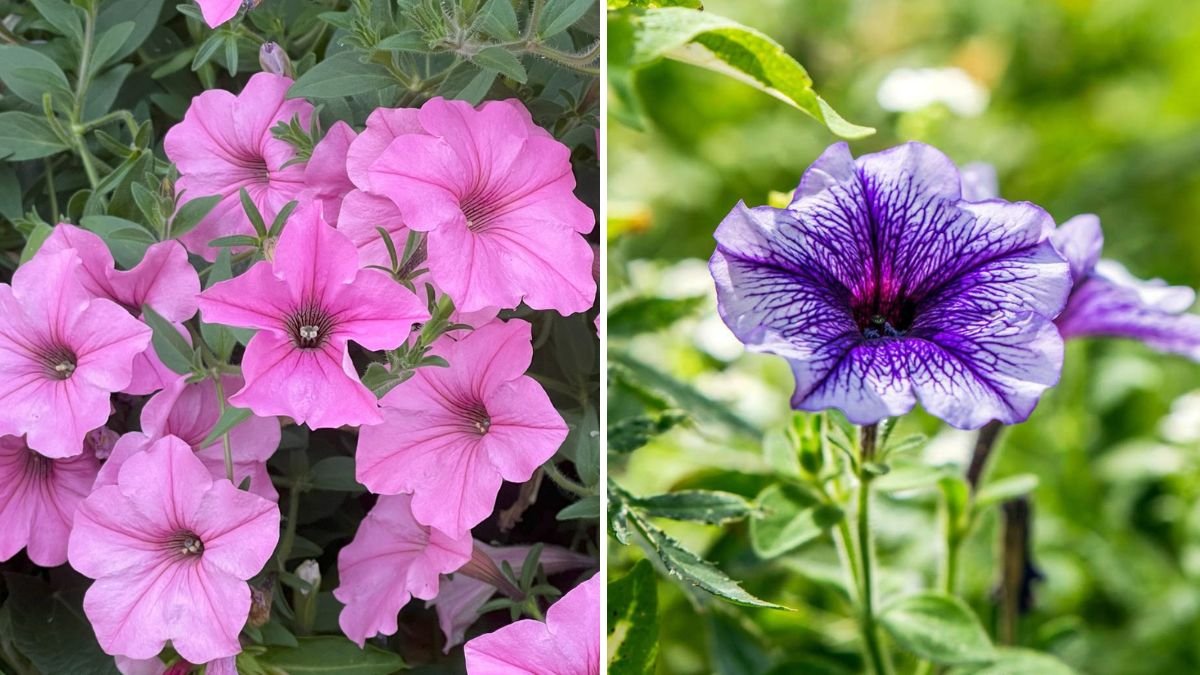Petunias (Petunia spp.) are among the most beloved annual flowers in gardens worldwide, cherished for their vivid colors, abundant blooms, and trailing growth habit. Their long flowering season, combined with a wide range of colors, makes them ideal for garden beds, containers, hanging baskets, and window boxes. However, to maintain continuous blooms throughout the growing season, proper pruning and care are essential.
This article provides a comprehensive guide on how to prune petunias for nonstop flowering, including plant selection, pruning techniques, care practices, and seasonal tips to maximize blooms.
1. Understanding Petunia Growth Patterns
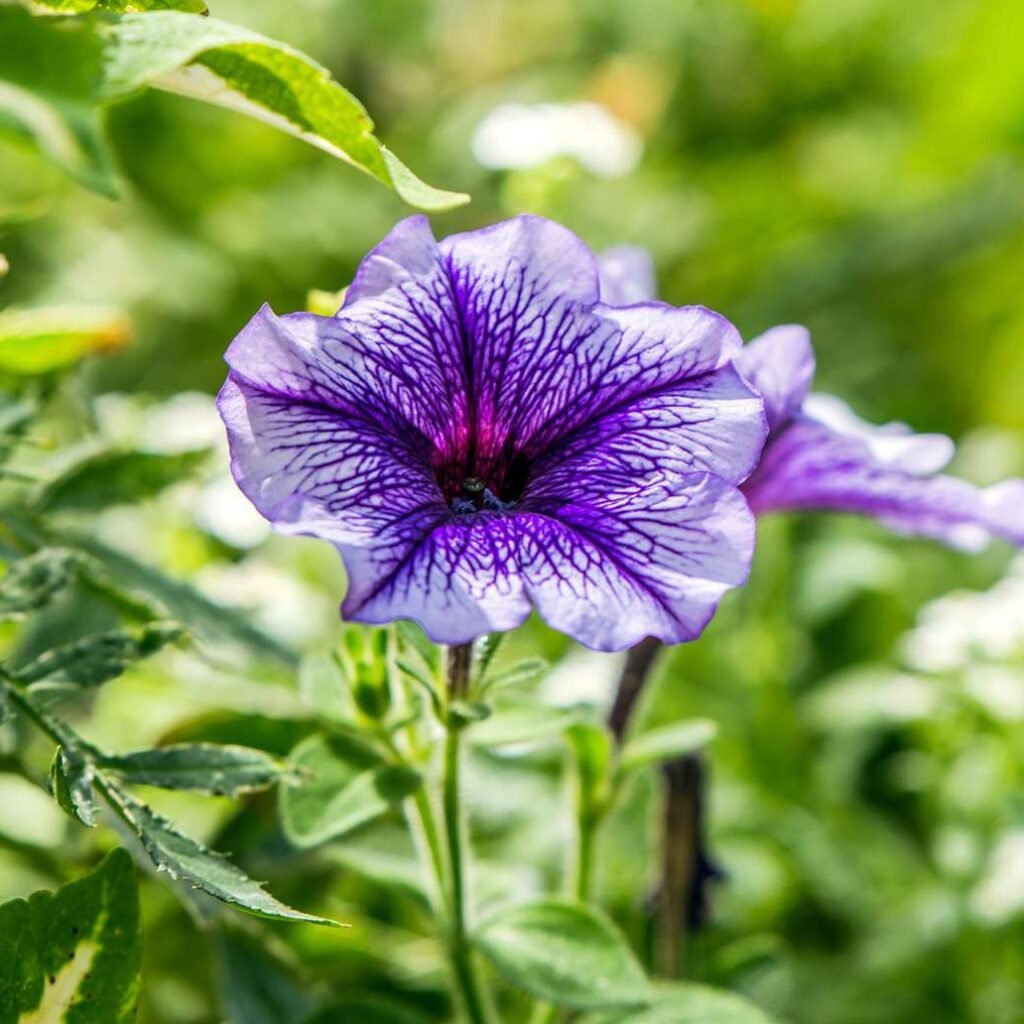
Petunias grow in two main types:
- Spreading/Trailing Petunias: Ideal for hanging baskets and containers; produce a cascading effect.
- Upright/Grandiflora Petunias: Grow vertically; perfect for garden beds or planters.
Understanding the growth habit is crucial because pruning techniques differ between trailing and upright varieties. Both types benefit from regular pruning to prevent leggy growth and promote continuous flowering.
2. Benefits of Pruning Petunias
Pruning petunias offers several advantages:
- Promotes Continuous Blooming: Removing spent flowers encourages the plant to produce new buds.
- Prevents Leggy Growth: Regular pruning keeps plants compact and bushy.
- Improves Air Circulation: Reduces the risk of fungal diseases.
- Enhances Plant Appearance: Maintains an attractive, neat shape.
- Maximizes Light Penetration: Ensures lower stems and leaves receive sufficient sunlight.
Regular pruning ensures petunias remain vigorous, healthy, and visually appealing throughout the growing season.
3. Tools for Petunia Pruning
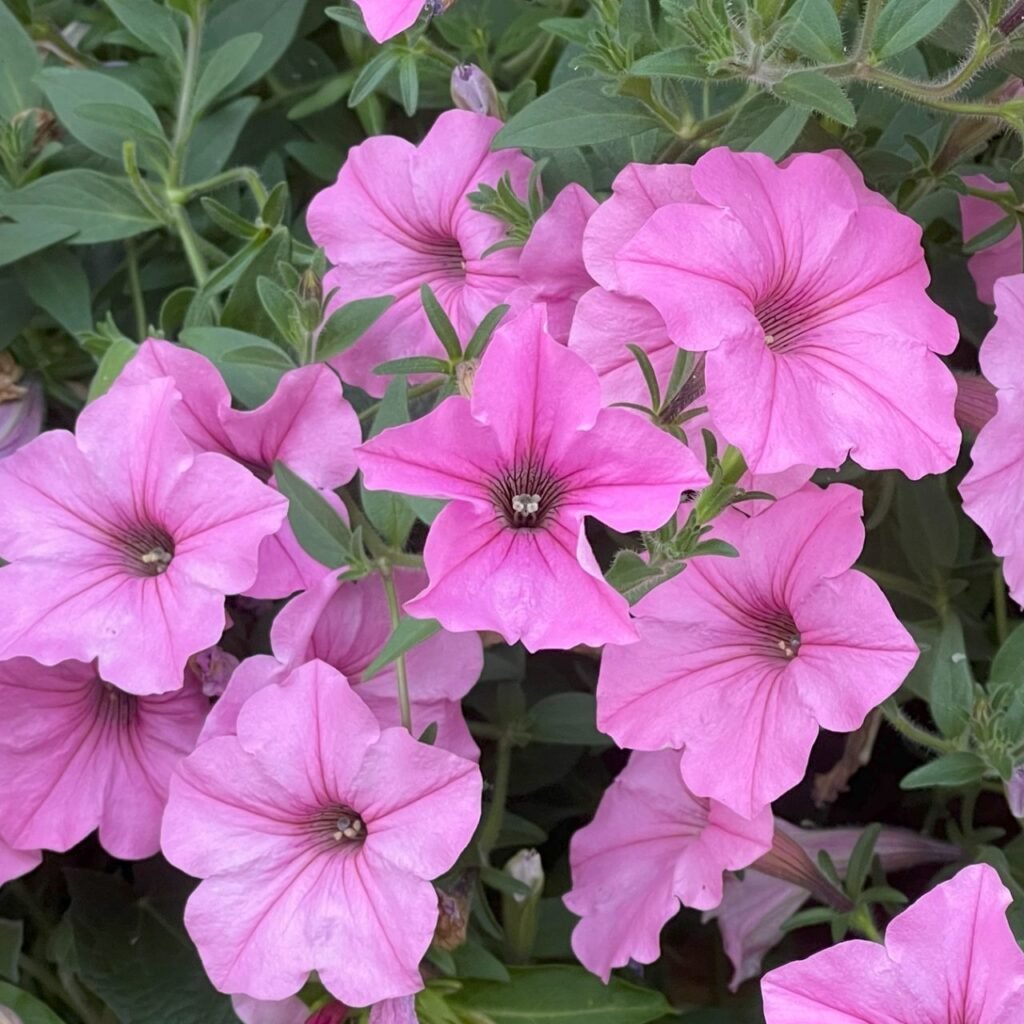
Effective pruning requires the right tools:
- Hand Pruners or Scissors: For precise cutting of stems and flowers.
- Gloves: Protect hands from soil and plant debris.
- Sterilization Supplies: Rubbing alcohol or diluted bleach to sterilize tools, preventing disease transmission.
Sharp, clean tools ensure clean cuts and reduce stress on the plant, promoting faster recovery and new growth.
4. Timing of Pruning
Timing is key to achieving continuous blooms:
- Early Season Pruning: Pinch back young plants to encourage bushier growth.
- Regular Deadheading: Remove spent flowers every 1–2 weeks to stimulate new blooms.
- Mid-Season Pruning: Lightly trim leggy stems and overgrown areas.
- Late Season: Minimal pruning as the flowering season ends to allow the plant to prepare for dormancy or removal.
Pruning at the right intervals maintains the plant’s energy for flowering rather than leaf or stem growth.
5. Deadheading Petunias
Deadheading is the removal of spent flowers, crucial for continuous blooming:
- Technique: Pinch or snip off faded blooms along with the stem portion leading to the next set of leaves or nodes.
- Frequency: Every few days for high-blooming varieties.
- Benefits: Prevents seed formation, redirects energy toward producing new flowers, and reduces disease risk.
Deadheading ensures a consistent display of vibrant blooms throughout the season.
6. Pinching and Shaping
In addition to deadheading, pinching back stems encourages compact growth:
- Pinching Technique: Remove 1–2 inches of new growth from the tip of stems.
- Timing: Early in the growing season and repeated as needed.
- Effect: Stimulates lateral branching, creating a fuller, bushier plant.
- Combination with Deadheading: Both practices together maximize flowering potential.
Pinching ensures petunias maintain an attractive, dense form and produce more flowers per plant.
7. Seasonal Care for Pruned Petunias
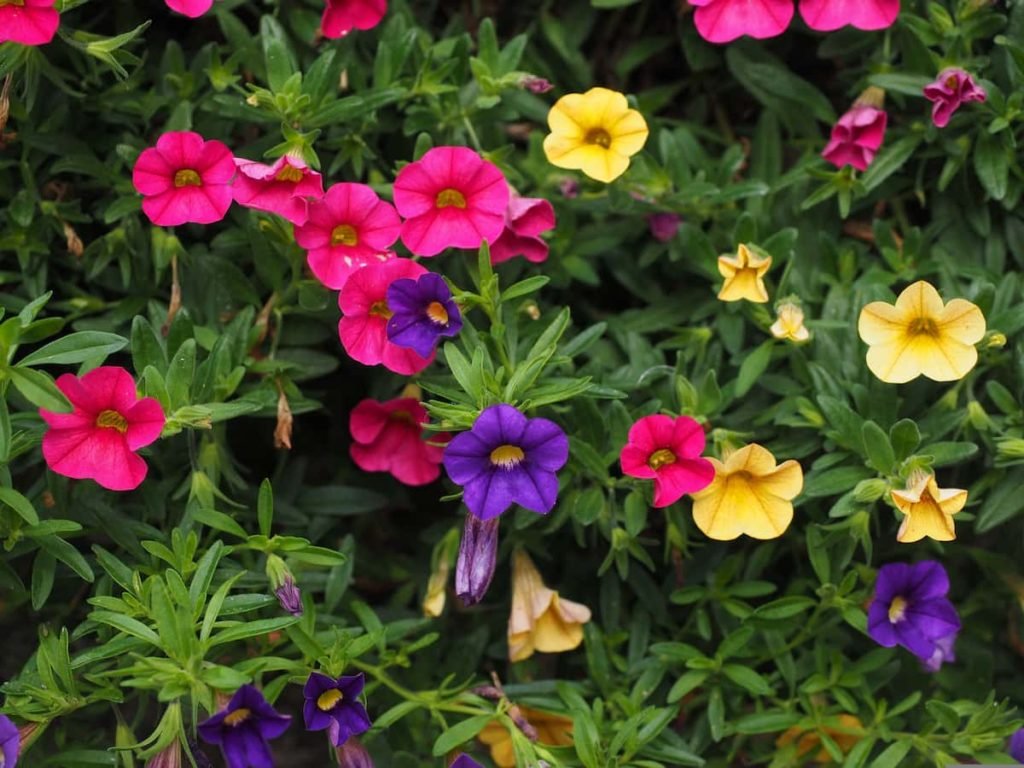
Proper care enhances the effectiveness of pruning:
- Watering: Keep soil consistently moist but not waterlogged; avoid wetting leaves.
- Fertilization: Apply a balanced liquid fertilizer every 2–3 weeks; high-phosphorus fertilizer encourages blooms.
- Sunlight: Petunias require at least 6–8 hours of direct sunlight daily for optimal flowering.
- Mulching: Helps retain soil moisture and regulate temperature.
- Pest Management: Inspect for aphids, spider mites, and whiteflies; use organic or chemical controls as needed.
Good care ensures pruned petunias recover quickly and produce continuous blooms.
8. Pruning Trailing vs. Upright Petunias

Pruning methods differ slightly depending on growth type:
- Trailing Petunias:
- Focus on deadheading spent blooms along the cascading stems.
- Pinch back stems that become excessively long or sparse.
- Avoid cutting too much at once to prevent damaging the trailing habit.
- Upright Petunias:
- Prune leggy or overgrown stems to maintain compact shape.
- Regular deadheading ensures blooms appear along the entire stem.
- Pinch tips to encourage branching for a fuller plant.
Tailoring pruning methods to growth habit maximizes bloom production and plant health.
9. Overcoming Common Pruning Challenges
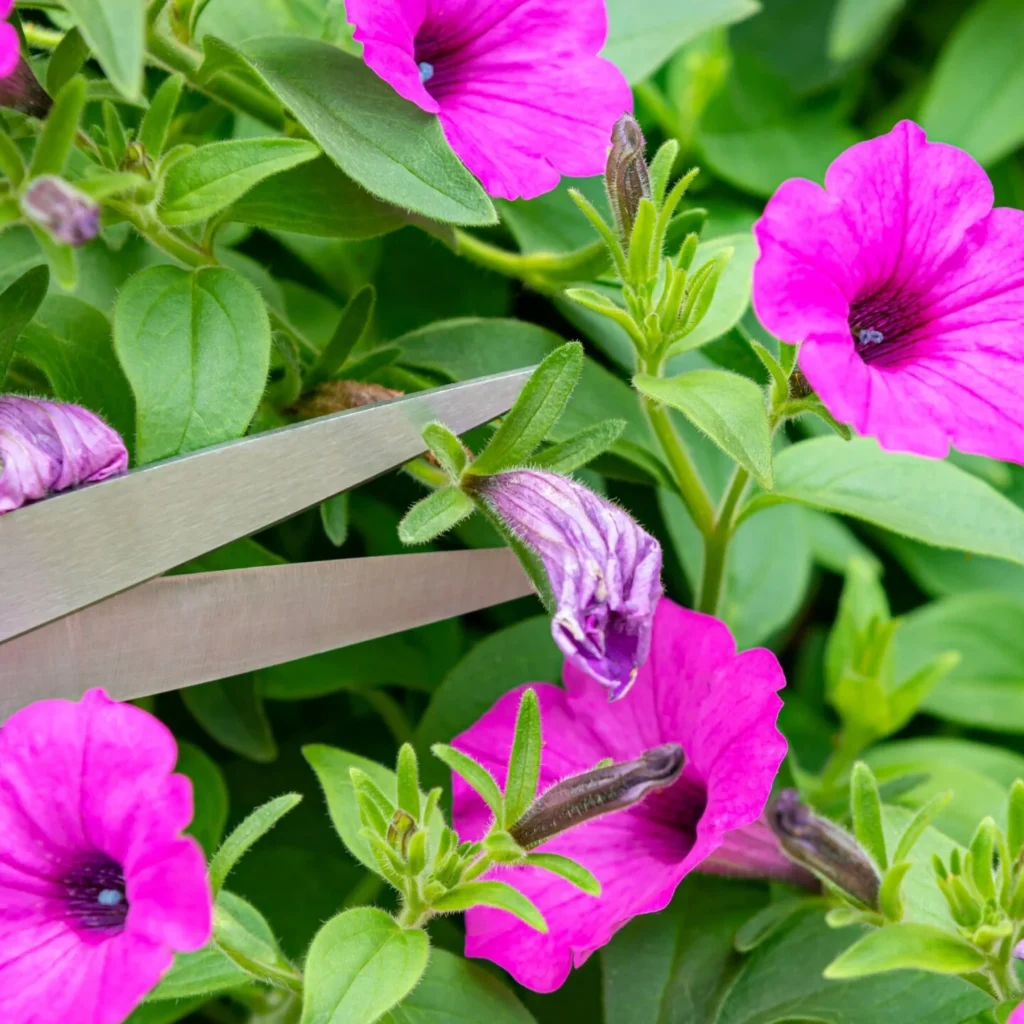
Petunias may face challenges that affect pruning and bloom continuity:
- Leggy Plants: Caused by insufficient sunlight; prune and reposition for better light exposure.
- Flower Decline Mid-Season: Fertilize and deadhead more frequently; ensure adequate water.
- Disease Issues: Remove affected stems; improve air circulation and avoid overhead watering.
- Container Plants: Limited soil nutrients; increase fertilization and monitor water closely.
Addressing these issues ensures pruning efforts lead to continuous and vibrant blooms.
10. Companion Planting for Petunias
Companion planting enhances both aesthetics and plant health:
- Complementary Flowers: Marigolds, lobelia, and nasturtiums create color contrasts.
- Pollinator-Friendly Plants: Attract bees and butterflies, enhancing overall garden ecosystem.
- Herbs: Basil and thyme can deter pests naturally.
Companion planting supports vibrant, healthy petunias while enhancing the overall garden environment.
11. Container Considerations
Petunias in containers require special attention for pruning:
- Pot Size: Larger containers allow fuller growth and easier pruning access.
- Soil: Use well-draining potting mix with added compost or slow-release fertilizer.
- Mobility: Move pots to optimize sunlight exposure for maximum blooms.
- Watering: Containers dry out faster; consistent monitoring prevents stress.
Container-grown petunias benefit immensely from regular pruning and care, producing continuous blooms even in limited spaces.
12. Seasonal Bloom Management
- Spring: Pinch young plants to promote early branching; begin deadheading.
- Summer: Regular deadheading, watering, and fertilization. Prune leggy stems as needed.
- Autumn: Reduce pruning as flowering slows; allow the plant to complete its life cycle.
- Winter: Remove spent plants or collect seeds for next season.
Seasonal management ensures optimal flowering and plant longevity.
13. Tips for Maximizing Bloom Duration
- Consistent Deadheading: Prevents seed development and stimulates new buds.
- Balanced Fertilization: Encourages flower production rather than leaf growth.
- Regular Pinching: Maintains a compact, bushy habit.
- Adequate Sunlight: Ensures strong stems and vibrant colors.
- Pest Monitoring: Reduces stress on plants, allowing more energy for flowering.
By following these practices, gardeners can enjoy continuous, lush petunia blooms from spring through fall.
Conclusion
Pruning is an essential practice for maintaining petunias’ vibrant and continuous blooms throughout the growing season. By understanding growth patterns, employing proper deadheading, pinching, and shaping techniques, and providing consistent care, gardeners can ensure that both trailing and upright petunias thrive. Combining pruning with balanced fertilization, adequate sunlight, pest management, and thoughtful seasonal adjustments maximizes bloom production and keeps plants healthy and attractive.
Whether planted in garden beds, hanging baskets, or containers, properly pruned petunias provide long-lasting color, texture, and charm, creating a lively and visually stunning garden space.
